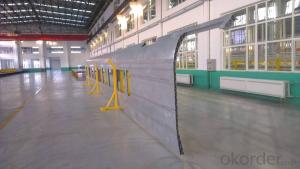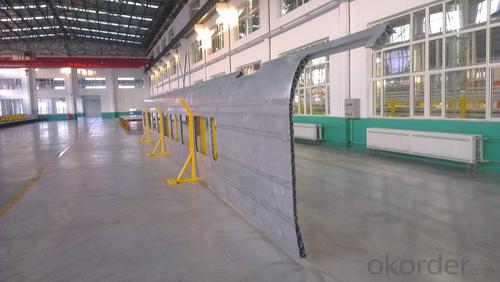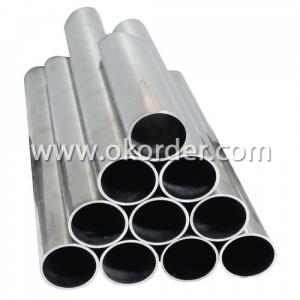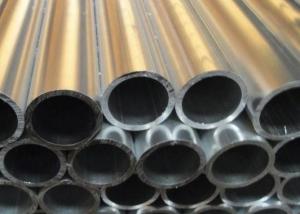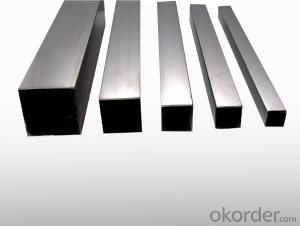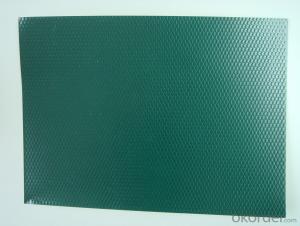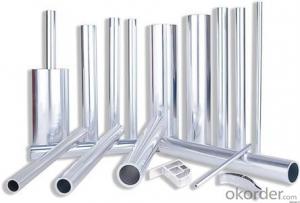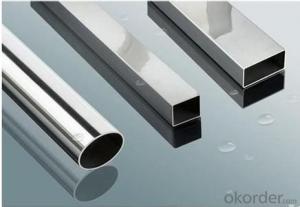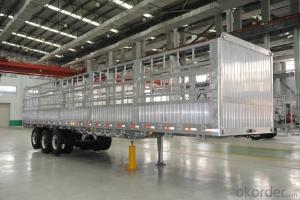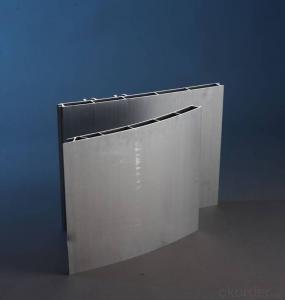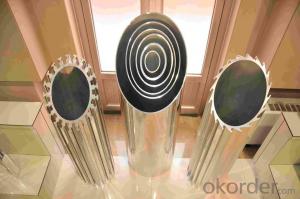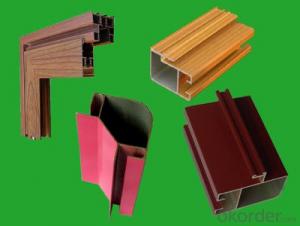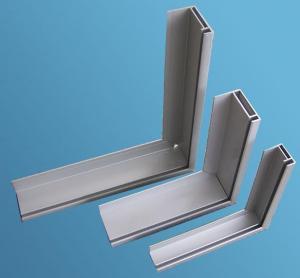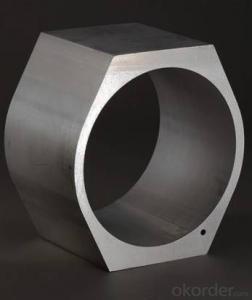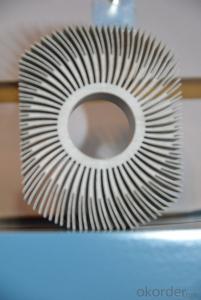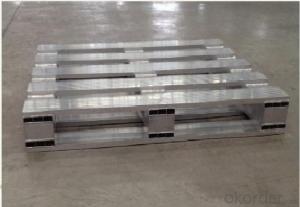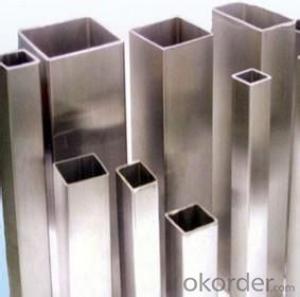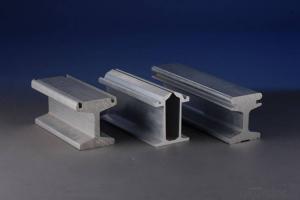Aluminum Pipes Vehicle Body Frame
OKorder Service Pledge
OKorder Financial Service
You Might Also Like
We are the largest aluminum profilemanufacture in
Material | Alloy Aluminum 6063,6061,6005,6082 or customer nominated |
Temper | T3, T4, T5, T6 and other |
Surface | Anodize, electrophoresis, Mill,etc |
Colour | -- |
Length | Not more than 16 meters |
Good Package | Inner plastic film /outside carton/wooden pallets |
Payment Method | T/T, L/C, etc |
Delivery Time | Normally 2-4 weeks, Delivery time can be consulted. |
Press Machine | 500-12500 tons all together 93 press lines. |
Fabrication | 1. Car body; 2. Drilling; 3. Bending; 4. Cutting; 5. etc. |
Certificate | ISO/TS 16949,DNV,IRIS,CCS,AFA,etc. |
Dies | 1. Using our dies, no fee; |
2. Using customer drawing, opening dies, usually about 5~50 tons then the dies cost can be refunded. | |
3. Die cost is negotiable base on the order quantity | |
Capability | Annual output 800,000 tons |
- Q: Do aluminum pipes require any special considerations for expansion joints?
- Special considerations must be taken into account for expansion joints when using aluminum pipes. Aluminum has a higher coefficient of thermal expansion compared to other materials, causing it to expand and contract more when exposed to temperature changes. This expansion and contraction can lead to stress, strain, and potential damage to the piping system if not properly addressed. To address this issue, it is crucial to install expansion joints at appropriate intervals along the aluminum pipe system. These expansion joints allow the pipe to expand and contract freely without exerting excessive stress on the system. Factors such as the temperature range the pipes will be exposed to and the length of the pipe runs should be considered when determining the spacing and design of the expansion joints. Considering the type of expansion joint to use for aluminum pipes is also important. It is recommended to use expansion joints made from materials compatible with aluminum, such as stainless steel or elastomeric materials, to ensure compatibility and longevity. Furthermore, the design and installation of these expansion joints should adhere to manufacturer guidelines and industry standards to ensure proper functionality. Regular inspections and maintenance of the expansion joints are essential to detect any signs of wear, damage, or failure. Proper care and maintenance of the aluminum pipe system, including the expansion joints, will help prevent leaks, pipe damage, and costly repairs in the long term. In conclusion, special considerations are necessary for expansion joints when working with aluminum pipes due to their higher coefficient of thermal expansion. The proper installation, spacing, and design of expansion joints, along with regular maintenance, are crucial for ensuring the durability and functionality of the aluminum pipe system.
- Q: How do aluminum pipes compare to HDPE pipes in terms of flexibility?
- Flexibility is one key difference between aluminum pipes and HDPE pipes. HDPE pipes are renowned for their exceptional flexibility, owing to the unique properties of the material they are composed of. High-density polyethylene (HDPE) is a thermoplastic polymer that exhibits remarkable elasticity and flexibility. Consequently, HDPE pipes can be effortlessly maneuvered, bent, and twisted to circumvent obstacles during installation. In contrast, aluminum pipes generally possess less flexibility when compared to HDPE pipes. Aluminum, being a metal, is characterized by higher rigidity and stiffness in comparison to HDPE. As a result, aluminum pipes are less capable of bending or flexing without incurring damage or deformation. These pipes are better suited for applications that demand greater structural integrity and rigidity, such as in industrial or heavy-duty settings. Despite being less flexible than HDPE pipes, aluminum pipes offer a range of other advantages including superior strength, resistance to corrosion, and the ability to withstand higher pressure and temperature conditions. The choice between aluminum and HDPE pipes should be based on the specific requirements of the project, taking into account factors such as flexibility, strength, durability, and the intended environment of usage.
- Q: Are aluminum pipes suitable for marine applications?
- Yes, aluminum pipes are suitable for marine applications. Aluminum is a lightweight and corrosion-resistant material, making it an ideal choice for use in marine environments. It has excellent resistance to saltwater, which is a common element in the marine industry. Aluminum pipes are also highly durable and can withstand extreme weather conditions, including high winds, waves, and impact from debris. Additionally, aluminum has a high strength-to-weight ratio, which allows for the construction of strong and efficient marine structures. Overall, aluminum pipes offer numerous advantages and are widely used in various marine applications, including boat building, offshore structures, and marine pipelines.
- Q: Are aluminum pipes suitable for desalination plants?
- Indeed, desalination plants can benefit from the suitability of aluminum pipes. With its lightweight nature and resistance to corrosion, aluminum proves itself capable of enduring the challenging circumstances within such facilities. The conditions prevalent in desalination plants, characterized by high pressure and corrosive seawater, pose no threat to aluminum. Thanks to their remarkable resistance to saltwater corrosion, aluminum pipes warrant trust in effectively transporting saltwater throughout the desalination process. Furthermore, the installation process for aluminum pipes is hassle-free, demanding minimal upkeep yet ensuring a lengthy lifespan. As a result, desalination plants can rely on the cost-effectiveness of aluminum pipes.
- Q: What are the different surface treatments available for aluminum pipes?
- There are several surface treatments available for aluminum pipes, each serving different purposes and providing unique benefits. Some of the commonly used surface treatments for aluminum pipes include anodizing, powder coating, painting, polishing, and chromate conversion coating. Anodizing is a popular surface treatment method that involves creating a protective oxide layer on the aluminum surface. This process not only enhances the corrosion resistance of the pipe but also provides a decorative finish. Anodized aluminum pipes are known for their durability and resistance to wear and tear. Powder coating is another widely used surface treatment for aluminum pipes. In this process, a dry powder is applied electrostatically and then cured to create a hard, protective coating. Powder coating not only enhances the appearance of the pipe but also provides excellent resistance to chemicals, UV rays, and impacts. Painting is a traditional surface treatment method that involves applying liquid paint to the aluminum surface. This treatment not only enhances the aesthetics of the pipe but also provides protection against corrosion and environmental factors. Painting is a versatile option as it allows for a wide range of colors and finishes. Polishing is a surface treatment method that involves buffing the aluminum surface to achieve a smooth and reflective finish. This treatment is commonly used for decorative purposes, as it enhances the appearance of the pipe by giving it a sleek and shiny look. Chromate conversion coating, also known as chemical conversion coating, involves applying a thin layer of chromate on the aluminum surface. This treatment enhances the corrosion resistance of the pipe and provides a good base for subsequent painting or powder coating. In summary, the different surface treatments available for aluminum pipes include anodizing, powder coating, painting, polishing, and chromate conversion coating. Each treatment offers specific benefits such as improved corrosion resistance, enhanced aesthetics, and increased durability. The choice of surface treatment depends on the intended application and desired outcome for the aluminum pipes.
- Q: Can aluminum pipes be used for structural purposes?
- Yes, aluminum pipes can be used for structural purposes. Aluminum is a lightweight and corrosion-resistant material, making it suitable for various structural applications such as building frames, scaffolding, and support structures. Additionally, aluminum pipes offer good strength-to-weight ratio and are easy to work with, making them a popular choice in construction and engineering projects.
- Q: Do copper tubes and aluminium tubes react chemically together?
- Depends on what conditions, aluminum is more active than copper, under certain conditions can be a chemical reaction
- Q: Are aluminum pipes suitable for chemical storage facilities?
- Aluminum pipes may not be the most suitable option for chemical storage facilities due to their potential reactivity with certain chemicals. While aluminum is generally resistant to corrosion, it can still react with some acids and alkaline substances, causing damage and potentially compromising the integrity of the pipes. Additionally, aluminum pipes may not possess the necessary strength and durability required for handling and storing chemicals safely. It is advisable to consult with a chemical engineer or an expert in material compatibility to determine the most appropriate pipes for specific chemical storage needs.
- Q: What are the different sizes of aluminum pipes available?
- There are various sizes of aluminum pipes available, ranging from small diameters like ¼ inch to larger ones like 12 inches or more. The specific sizes will depend on the manufacturer and the intended application of the pipe.
- Q: Are aluminum pipes suitable for high-speed train tracks?
- No, aluminum pipes are not suitable for high-speed train tracks.
Send your message to us
Aluminum Pipes Vehicle Body Frame
OKorder Service Pledge
OKorder Financial Service
Similar products
Hot products
Hot Searches
